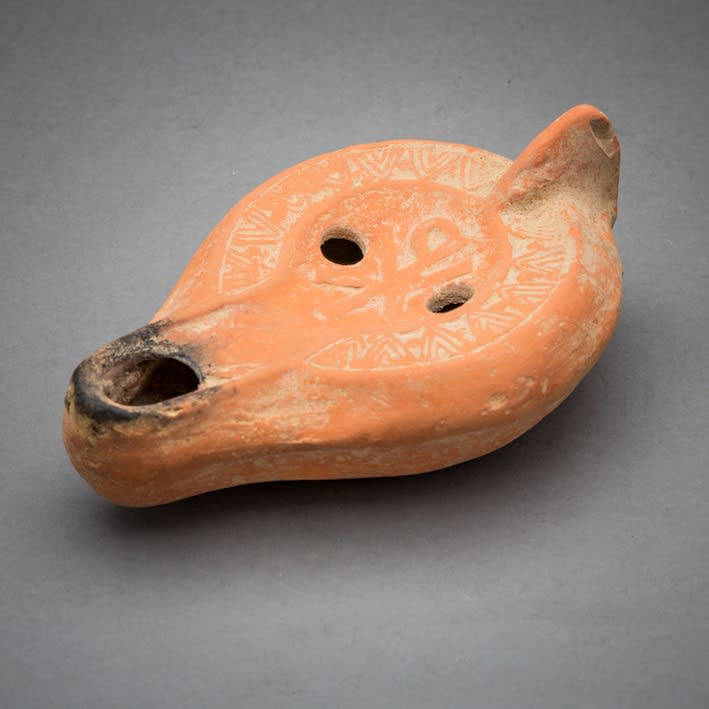Early Christian Terracotta Oil Lamp, 200 CE - 400 CE
Terracotta
8.1 x 12.1 cm
3 1/4 x 4 3/4 in
3 1/4 x 4 3/4 in
AM.0418
Terra sigillata wares were the classic fine wares of the Roman period. The roots of the industry go back to Italy during the 1st Century B.C. Building on the foundations...
Terra sigillata wares were the classic fine wares of the Roman period. The roots of the industry go back to Italy during the 1st Century B.C. Building on the foundations of a pre-existing industry dedicated to black-slipped ware, the glossy red-slipped terra sigillata wares were first produced at Arezzo, in northern Tuscany. The industry expanded, and factories producing Italian-type sigillata were founded across the Mediterranean world, notably southern France and northern Spain. By the 3rd-4th Century A.D., the center of terra sigillata production had shifted south, to the shores of Roman North Africa. From the great port of Carthage, these wares were exported throughout the Mediterranean world and representative examples have been found from Israel to England. Characterized by a red-orange to red- brown clay and a slip of a more refined version of the same clay, these glossy household vessels were decorated by relief figures and stamped designs.
This type of lamp is closely related to the production of African terra sigillata ware. Yet their exact origin is unknown, while some suggest Tunisia, others have indicated either Egypt or Cyrenaica. A lamp such as this might have lit homes when the Roman Empire ruled the world. A metaphor of joy and prosperity, for hope, for life itself, lamps have illuminated the path of civilization for centuries. They have guided great thoughts through the night, stood vigil with lonely passions. In the presence of this simple object, we are in touch directly with a vanished world, with the people once warmed by its glow. Today it remains as an enduring symbol of man's desire to conquer the darkness.
This type of lamp is closely related to the production of African terra sigillata ware. Yet their exact origin is unknown, while some suggest Tunisia, others have indicated either Egypt or Cyrenaica. A lamp such as this might have lit homes when the Roman Empire ruled the world. A metaphor of joy and prosperity, for hope, for life itself, lamps have illuminated the path of civilization for centuries. They have guided great thoughts through the night, stood vigil with lonely passions. In the presence of this simple object, we are in touch directly with a vanished world, with the people once warmed by its glow. Today it remains as an enduring symbol of man's desire to conquer the darkness.



